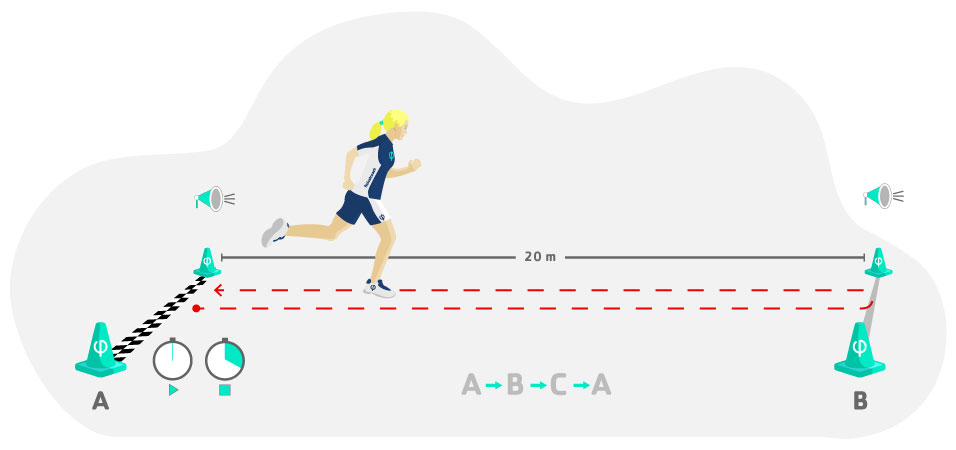
Yo-Yo Endurance test (YYET)
The Yo-Yo Endurance Test (YYET), created by Jens Bangsbo in Denmark, is considered one of the most reliable indirect tests available to measure Maximal Oxygen Uptake (VO2 Max) in a progressive and maximal way.
This field test is widely used for the evaluation of the subject’s aerobic endurance capacity. It has 2 levels of dificulty:
-
- YYET-1: Designed for younger subjects or amateurs who have a lower cardiorespiratory capacity (Starts at a speed of 8 km/h (5 mph)).
- YYET-2: Designed for elite athletes (Starts at 11.5 km/h (7 mph)).
- Required Material: A flat non-slip surface, 4 cones to mark the circuit course, a tape measure and a stopwatch. Besides, an audio equipment to play back the audio of the test protocol is needed. If the subjects’ heart rate (HR) must be measured, a heart rate monitor will be needed.
- Procedure: The subject must run 20-meter back and forth shuttles, between the start (A), turn (B) and finish (A) lines, until reaching exhaustion, at progressively increasing speed controlled by audio signals (“beeps”) emitted from an audio equipment. The first the subject does not reach the finish line (A) on time, he/she will receive a warning, and at the second warning the test will be terminate and the number of the last shuttle reached will be registered.
- Assessment: The number of back and forth shuttles that the subject is able to cover in a single attempt is measured.
- Remarks: The YYET is very similar to the Léger test (Course Navette). The main difference is that in the Léger test the speed increases 0.5 km/h per minute while in the YYET each period has a number of repetitions (reps) that increase as the periods increase. The other difference between the two tests are the VO2 Max prediction equation.
Take this test and 139 more in our App